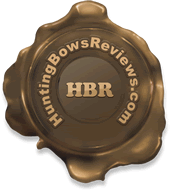Moose Calling Tips
If you're interested in moose hunting and are out to hunt the big bull, one of the first things you need to learn for a successful hunting experience is how to call a moose. Moose calling is the technique used by hunters to call in the prey. However, most amateur hunters don't realize how easy it really is and don't appreciate its importance when it comes to hunting the big bull.
There are three very basic and main concepts when it comes to bull moose calls. First and foremost, it's one of the easiest things to do. Even children or people with absolutely no experience can do it with some of nature's most basic elements such as breaking sticks, brushing leaves, shuffling the grass and other various environmental noises you can make.
There are three very basic and main concepts when it comes to bull moose calls. First and foremost, it's one of the easiest things to do. Even children or people with absolutely no experience can do it with some of nature's most basic elements such as breaking sticks, brushing leaves, shuffling the grass and other various environmental noises you can make.
Secondly, from late August to October and even past that, moose calling techniques can work in just about any situation even in off-seasons where some hunters believe that it does not improve their chances. There are some people who believe that certain calls or certain noises will only work during certain parts of the year or on certain animals. This simply is not the case. Agreed, cow calls are most effective during the rut. But these calls work during other seasons as well. There are no hard and fast rules when it comes to calling moose.
And lastly, patience is your biggest virtue. Calling requires patience. Sometimes it can take an entire day before you get any sort of response to your calls. You must be willing to wait. If patience is your weakest link then that's something you need to "practice" before hunting.
If you're hunting for the big bull, practice your cow call. Cow calls are soft and last about two to three seconds at a time during most part of the year. During mating season, the moose mating calls can last up to five or six seconds. They are guttural, moaning sounds. The best way to learn them would be to listen to an audio of a live cow call and then practice it.
And lastly, patience is your biggest virtue. Calling requires patience. Sometimes it can take an entire day before you get any sort of response to your calls. You must be willing to wait. If patience is your weakest link then that's something you need to "practice" before hunting.
If you're hunting for the big bull, practice your cow call. Cow calls are soft and last about two to three seconds at a time during most part of the year. During mating season, the moose mating calls can last up to five or six seconds. They are guttural, moaning sounds. The best way to learn them would be to listen to an audio of a live cow call and then practice it.
A good basic rule to follow when doing a grunt or cow call is to make several calls in sequence, several times during a 30 minutes period at 3 hour intervals.
During the silent periods you can brush grass or make other environmental noises like antler thrashing to attract more attention. Just remember to be patient. Don't expect the moose to come charging in at full speed.
In order for your moose calls to be heard over the maximum distance possible, learn to use the wind to your advantage.
Make downwind calls so that the wind carries the sound as far as possible. You can also use a funnel as a megaphone when calling for additional volume. Most hunters traditionally use a rolled up strip of birch bark for this purpose but you can basically use anything in the shape of a funnel. This technique is useful on days when there is no wind.
Early mornings and late afternoons are the best times for moose calling. Mid-mornings are usually the hottest parts of the day so the animals prefer to rest. This doesn't mean that you cannot find the occasional moose strolling around. You can call through the day for optimal effect.
Moose calling is an effective way for hunters to attract bulls. But it is important to remember that moose calling techniques, as with everything else, are useful only when properly used.
During the silent periods you can brush grass or make other environmental noises like antler thrashing to attract more attention. Just remember to be patient. Don't expect the moose to come charging in at full speed.
In order for your moose calls to be heard over the maximum distance possible, learn to use the wind to your advantage.
Make downwind calls so that the wind carries the sound as far as possible. You can also use a funnel as a megaphone when calling for additional volume. Most hunters traditionally use a rolled up strip of birch bark for this purpose but you can basically use anything in the shape of a funnel. This technique is useful on days when there is no wind.
Early mornings and late afternoons are the best times for moose calling. Mid-mornings are usually the hottest parts of the day so the animals prefer to rest. This doesn't mean that you cannot find the occasional moose strolling around. You can call through the day for optimal effect.
Moose calling is an effective way for hunters to attract bulls. But it is important to remember that moose calling techniques, as with everything else, are useful only when properly used.
Moose Calling Videos
Equipment & Tools
Tips & Techniques








